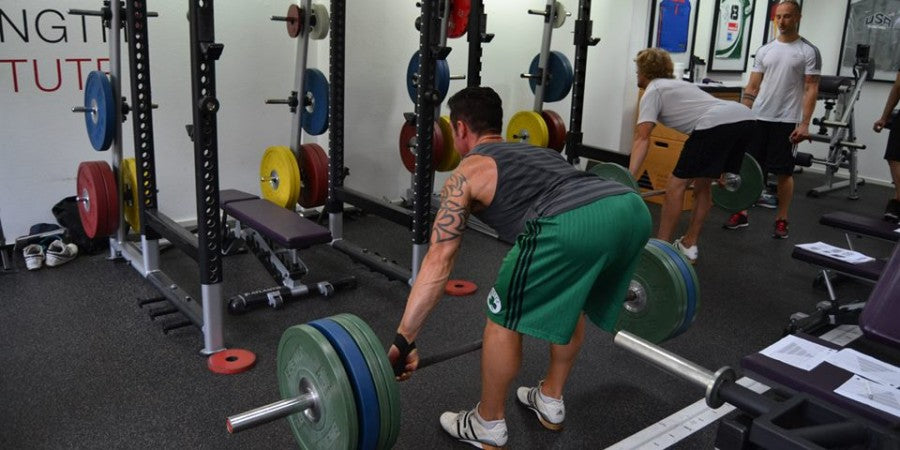The floor deadlift is an advanced exercise that we don't use until later in the exercise progression in YPSI. Why? The technique is much more difficult to learn than with squats. There must be a parallel shift in the knee and hip joint at the same time so that the weight can be lifted with an optimal back position and as little stress as possible on the intervertebral discs. Often the knee and hip extensions occur one after the other, which puts more stress on the lower back. Typical strength deficits in the upper and lower back as well as limited mobility prevent many trainees from performing the exercise properly at the beginning.
What is often neglected is that learning the technique is not only a question of understanding, but also of mechanical basics. Muscular deficiencies, such as a lack of scapular retractor strength, prevent the lifter from maintaining that technique and position with heavier loads, despite a good understanding of technique and position.
Thus, in addition to understanding the technique and position, optimizing muscular balance is also crucial to improving the cross-hat technique.
At the YPSI, we use the following assistance exercises with our clients and athletes to correct the most common structural deficits and thus improve technique:
1. 45° back extension, 2012 pace
2012 Tempo means: Lower the weight for 2 seconds, no pause at the turning point, raise the weight for 1 second, pause for 2 seconds in the starting position. For the 45° back extension, this is the stretched position at the top of the exercise. This point is the position where the lower back is most stressed when deadlifting. If your back gets stronger there, you'll find it easier to stay upright while deadlifting. The extra weight can be a dumbbell held in front of your chest or a barbell behind your neck.
2. Romanian Deadlift, Snatch Grip, 4410 Tempo
With the 4410 Tempo, the 4-second pause is at the reversal point of the movement, in this case the stretched position of the Romanian Deadlift. The longer time the hamstrings and lower back are exposed to the weight makes hip extension easier in the next phase of regular deadlifts.
3. Floor deadlift, 5050 pace
The 5050 tempo, i.e. the consciously slow execution - of 5 seconds - of both the eccentric and the concentric part of the repetition is a very good way to notice technical errors and to break through sticking points, since these hold the weight longer than at a faster tempo are exposed.
Use these assistance exercises to strengthen your lower back and take your deadlift technique to the next level. So you can take advantage of this very effective exercise without causing any disadvantages for your back.
Good luck with your training!
Picture: YPSI students Lee Desoiza and Daniel Tjernqvist doing a snatch grip Romanian deadlift with a 4410 tempo during YPSI training camp in August 2015.

